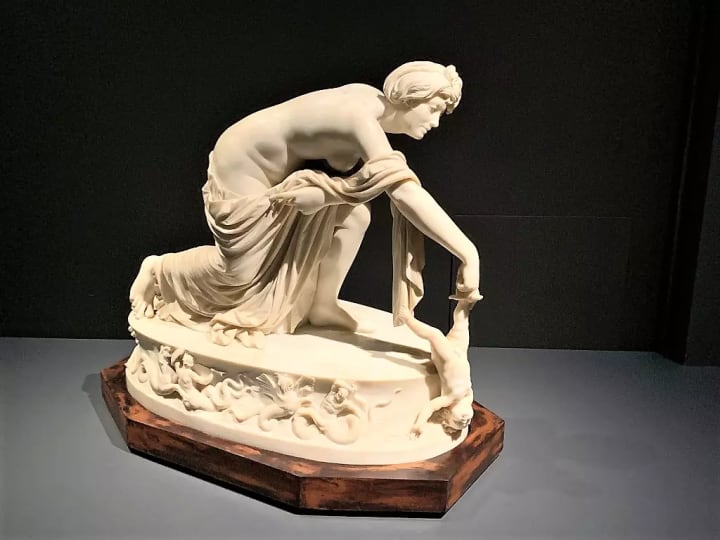Achilles and his heel
Most people think that the heel story was first told by Homer, but this is not so

The name Achilles is remembered today mainly because everyone has two Achilles tendons, which connect the calf muscle to the heel, and many people have suffered considerable pain, discomfort and inconvenience when one of these has been strained or torn.

The tendons are so named because of the legend of Achilles from Greek mythology. The story that is commonly told is that Achilles was a hero of the Trojan War who died after being struck on the heel by a poisoned arrow. His mother Thetis, a sea nymph, had dipped him in the River Styx when he was a baby, and this had rendered him proof against any mortal wound. However, she held him by one heel as he was dropped into the water, and that meant that a small area of his body was unprotected.

The term “Achilles heel” has therefore come to mean a small but vital vulnerability, and it is usually applied in a non-physical sense. A government, for example, might be proof against attacks from all quarters but have one policy or characteristic that is its undoing, and this is its Achilles heel.
The Trojan War hero
We know of Achilles from what most people regard as the greatest work of ancient Greek literature, namely the Iliad, which is generally attributed to Homer who probably lived in the 8th century BC. (There has been plenty of debate as to whether there really was a poet named Homer, and whether the Iliad might have been composed by several poets).
In the Iliad, which tells the story of the ten-year war between the Greeks and the Trojans, leading to the eventual defeat and destruction of Troy, Achilles is the main hero. He is a complex character who, despite being a hero in terms of the conflict and his victories, has huge character flaws that make his portrayal endlessly fascinating. He is subject to mood swings, to petty jealousy, to blazing anger and to unjustified pride, and it is this pride, according to Homer, that is his undoing.

Achilles’ anger leads him to take revenge on his Trojan rival Hector, whom he kills, by dragging his body round the walls of Troy behind his chariot, but then he realises that he has broken the code of military honour and allows Hector’s father, King Priam, to retrieve the body and give it a decent burial.
Not in Homer?
However, the story told by Homer makes no mention of Achilles’ heel, the River Styx or of him being struck by a poisoned arrow, and this surprises many people. Surely this is the one thing that everybody knows, so must it not be part of the Iliad story? The answer is No. Homer implies that Achilles will be killed by Paris, acting at the instigation of the god Apollo, but he does not spell out how this will happen. Strangely enough, Homer does state that Paris (a brother of Hector) is himself killed by a poisoned arrow – not in the heel – so this might be a source for the idea that this was the fate of Achilles.

Myths and legends grow in the telling, and fresh stories about great heroes tend to be added as time goes by. This is common in all civilizations where tales are told by minstrels about the great men of the past. Eventually someone writes these down and the new stories become accepted as part of the original myth.
So where then?
The Roman poet Ovid, who was active during the reign of Emperor Augustus, suggested in his “Metamorphoses” that Achilles had a vulnerable spot on his body, but was not specific as to where this was.
However, a later poet, Statius, who wrote during the reign of Emperor Domitian in the late first century AD, told the story as it is generally understood today. Statius wrote “Achelleid”, an unfinished poem that includes the complete legend and states that the poisoned arrow was fired by Paris at the instigation of two gods who favoured the Trojans, namely Neptune and Apollo. It is therefore Statius that we have to thank for the tendons and heels, not Homer.
The term “Achilles heel” took a long time to reach the English language, thanks to writers who had had a thoroughgoing classical education. The poet Samuel Taylor Coleridge referred in 1810 to Ireland as “that vulnerable heel of the British Achilles”, and Thomas Carlyle was the first to use “Achilles heel” as such (in 1864).
Maybe you do not hear people these days talking so much about individuals or organizations having an Achilles heel, but “tendo Achillis” is in every anatomy textbook, so the legend of Achilles looks set to live on for quite a while yet!
About the Creator
John Welford
I am a retired librarian, having spent most of my career in academic and industrial libraries.
I write on a number of subjects and also write stories as a member of the "Hinckley Scribblers".






Comments
There are no comments for this story
Be the first to respond and start the conversation.